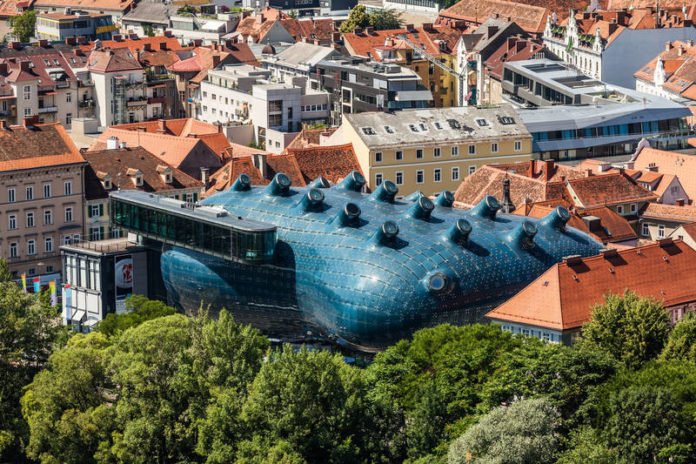Researchers at the Technical University of Munich (TUM) have studied three projects to investigate whether or not the desired impacts materialize.
A novel investigation published in the Journal of Urban Design, comprised of the exceptional architectural projects in Graz, Lucerne, and Wolfsburg. Guggenheim Museum by star architect Frank Gehry led to economic buoyancy in the Spanish city of Bilbao.
This “Bilbao Effect” is captivating to many urban planners and politicians who look to better position their cities in economic and social terms by building extraordinary tectonic projects.
The Guggenheim Museum made it feasible for the city of Bilbao to re-invent itself. The Spanish industrial city was going through economic fall. After the opening of the museum, the city was able to reposition itself economically, transforming itself into a cultural metropolis.
Many cities are expecting to dissect analogous gains by means of star architecture.
Prof. Alain Thierstein of the TUM Chair for Urban Development explained, “The impact of these architectural projects on small and medium-sized cities, in particular, remains uninvestigated.”
A team of scientists from the Chair, HafenCity University Hamburg, and the Technische Universität Berlin has investigated three case-studies as follows, the Kunsthaus Graz, the culture and convention center Luzern (KKL) and the phaeno science center in Wolfsburg.
Since these structures have existed betimes for over 15 years, observation of prolonged impacts is likewise possible.
The scientists investigated the interaction of economic factors, the design of the buildings and its socio-cultural impacts. The post they determined that although the projects have positive economic impacts, for instance, expansion of tourism and cultural programs, these impacts do not result in a clearly evident repositioning.
An unceremonious relationship amid the economic impacts of the projects and the socio-economic changes, for instance in the labor market or in terms of tourism, could not be recognized.
Dr. Nadia Alaily-Mattar, project manager and research associate at the TUM Chair for Urban Development says, furthermore, not all economic impacts are at present visible.
“In Wolfsburg, the realization of phaeno led to an increase in the self-confidence of the politicians and local administrative authorities.”
This social effect may also have positive economic impacts on the city in the long term.
In all above three cases, the researchers observed a shift in the spatial relationships of the city. In Graz, the Kunsthaus forms a bridge linking urban districts which were antecedently deemed as separate and evaluated differently in social terms. In Lucerne, the KKL has strengthened the convergence of countryside and city.
The phaeno had an identical impact on Wolfsburg like the area across from the city’s main train station was of exceptional importance for the city, but was underutilized. The phaeno integrated this area into the rest of the city.
Alaily-Mattar points out, adding that economic and sociocultural effects can often be temporary and ephemeral that these structural changes are the most sustainable impacts of the projects.
“Morphological effects are usually more stable and less dependent on the ‘Star Factor’. The desire on the part of urban planners and politicians to achieve certain impacts by means of star architecture must not overlook the contribution made by the architecture itself. In addition to economic and sociocultural effects, the influence of star architecture on the city is spatial as well.”
